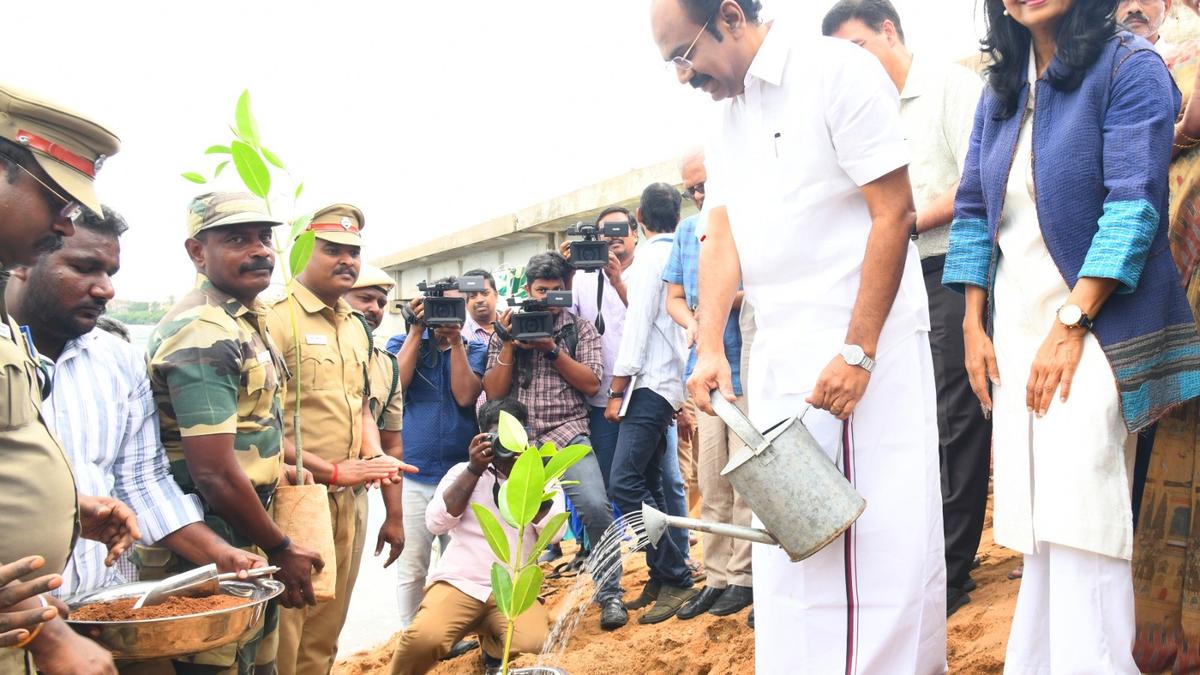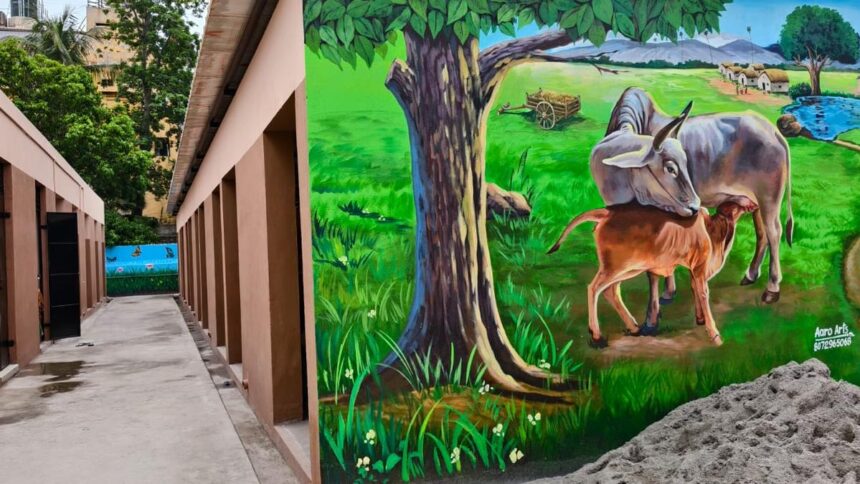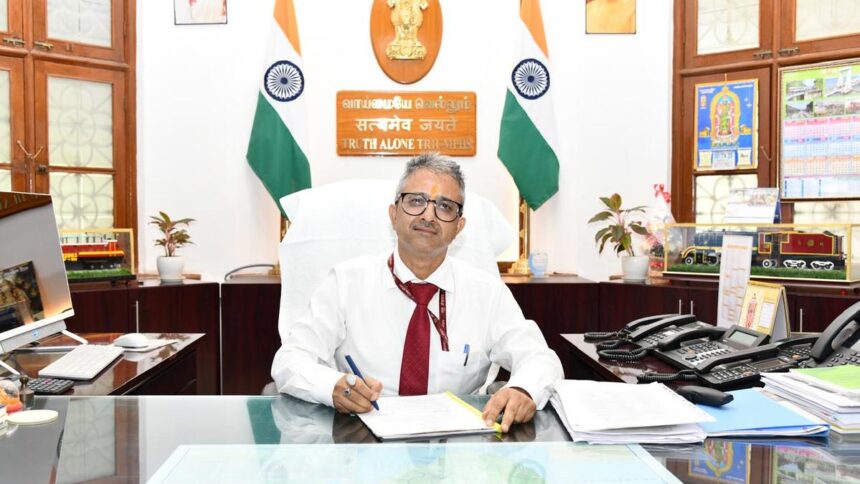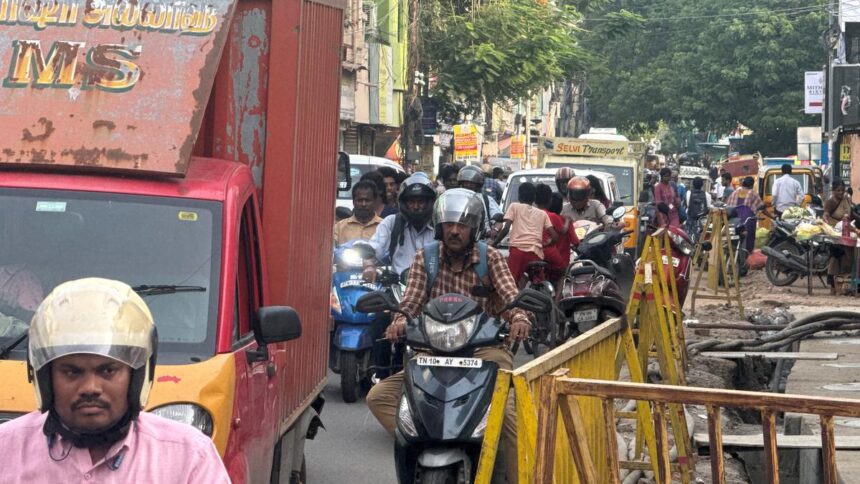
Green gesture: Environment and Climate Change Minister Thangam Thennarasu planting mangrove saplings at the Adyar estuary to mark the World Mangrove Day that falls on July 26.
| Photo Credit: Special Arrangement
On the eve of World Mangrove Day, observed annually on July 26, Environment and Climate Change Minister Thangam Thennarasu planted mangrove saplings at the Adyar estuary in Chennai.
Since 2022, Tamil Nadu has planted and restored over 2,900 hectares of mangroves across nine coastal districts to reduce the impact of cyclones, tidal surges, and erosion, and support biodiversity and local livelihoods.
As the State’s 1,076-kilometre coastline, which spans 14 districts, is increasingly vulnerable to climate-related risks, the Tamil Nadu government has taken renewed efforts in restoration.
According to Supriya Sahu, Additional Chief Secretary, Departments of Environment, Climate Change and Forests, in February 2023, the Department launched a three-year mangrove restoration scheme with an allocation of ₹25 crore, focusing on both planting new mangroves and rehabilitating degraded areas. The programme, which is expected to run until 2026, targets ten districts and covers both forest and revenue lands with potential for mangrove growth.
As per official data, during the first year of the scheme, 2022–23, 1,181.4 hectares were planted, with significant work in Thiruvarur, Nagapattinam, Mayiladuthurai, and Thoothukudi.
At the same time, 200 hectares of degraded mangroves were restored, particularly in Thiruvarur. In the following year, 720 hectares of new plantations were added, along with the restoration of 732 hectares. In 2024–25, an additional 275 hectares were planted, with more expected by the end of the year.
Ms. Sahu said that the planting efforts have used several techniques, including linear planting of propagules, intertidal nursery cultivation, and modified fish-bone planting patterns to maximise seedling survival.
Special focus has been given to reintroducing rare species like Sonneratia apetala, Xylocarpus granatum, and Kandelia candel, which had largely disappeared from the region. Alongside mangroves, bio-shield plantations using trees such as casuarina, palmyrah, and cashew have been introduced to protect against wind and wave action.
The mangrove plantation efforts were undertaken as part of Tamil Nadu Biodiversity Conservation and Greening Project for Climate Change Response (TBGPCCR), the Compensatory Afforestation Fund Management and Planning Authority (CAMPA), the Chennai River Restoration Trust (CRRT), and other centrally sponsored schemes.
However, challenges remain, particularly in districts like Chengalpattu and Pudukkottai, where plantation activity has been limited due to ecological or hydrological factors.
Published – July 26, 2025 12:45 am IST






















